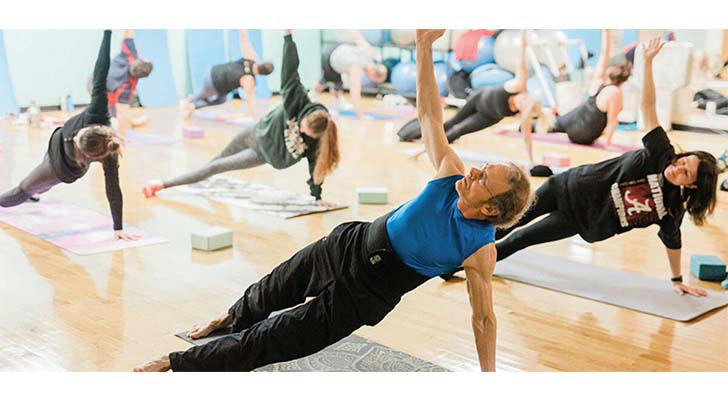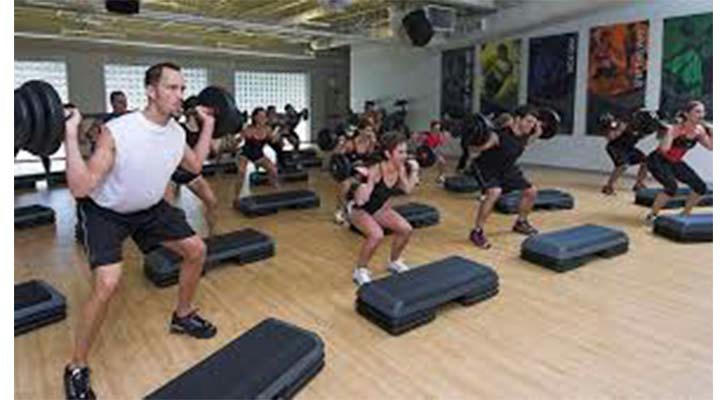Fitness Program: A Perfect Plan for Health and Strength
In today’s fast-paced society, more and more people are becoming aware of the importance of health and fitness. Exercise not only helps in shaping an ideal physique but also strengthens the body and improves mental well-being. However, many individuals face challenges in their fitness journey, such as a lack of scientific training methods, low motivation, or difficulty maintaining consistency. Therefore, it is crucial to create a well-structured and effective fitness program. This article will provide a detailed guide on how to design a fitness program tailored to your needs, covering training types, workout schedules, nutrition guidance, and key considerations to help you achieve your fitness goals efficiently.

In today’s fast-paced society, more and more people are becoming aware of the importance of health and fitness. Exercise not only helps in shaping an ideal physique but also strengthens the body and improves mental well-being. However, many individuals face challenges in their fitness journey, such as a lack of scientific training methods, low motivation, or difficulty maintaining consistency. Therefore, it is crucial to create a well-structured and effective fitness program. This article will provide a detailed guide on how to design a fitness program tailored to your needs, covering training types, workout schedules, nutrition guidance, and key considerations to help you achieve your fitness goals efficiently.
Basic Components of a Fitness Program
A comprehensive fitness program generally includes the following key elements:
Warm-up and stretching – Prevent injuries and improve performance.
Strength training – Build muscle and increase basal metabolic rate.
Cardio training – Enhance cardiovascular function and promote fat burning.
Core training – Strengthen core stability and improve athletic performance.
Cool-down and recovery – Assist muscle repair and reduce post-workout fatigue.
Types of Training and Methods

1. Strength Training
Strength training is an essential component of any fitness routine. It helps in muscle building and enhances overall body function. Common strength training methods include:
Bodyweight exercises – Push-ups, pull-ups, squats, etc., suitable for beginners or those without access to equipment.
Free weight training – Using dumbbells or barbells to enhance muscle strength and coordination.
Machine-based training – Ideal for beginners to ensure safety and correct posture.
Recommended training plan:
Beginners (3-4 times per week): Full-body training, selecting 2-3 major muscle group exercises (e.g., squats, bench press, deadlifts), 8-12 reps per set, 3-4 sets.
Intermediate (4-5 times per week): Split training, alternating upper and lower body workouts, 6-10 reps per set, 4-5 sets.
Advanced (5-6 times per week): High-intensity training, including supersets and pyramid training, 4-8 reps per set, 5-6 sets.
2. Cardio Training
Cardio exercises improve heart and lung function while promoting fat loss. Common cardio workouts include:
Jogging – Ideal for beginners to improve endurance.
HIIT (High-Intensity Interval Training) – Short bursts of high-intensity exercises to maximize fat burning.
Swimming – Low-impact and full-body workout.
Jump rope – Simple yet effective for improving cardio and coordination.
Recommended cardio plan:
Beginners: 3 times per week, 30-40 minutes of moderate-intensity workouts (e.g., brisk walking or jogging).
Intermediate: 4-5 times per week, 40-60 minutes (e.g., jogging or jump rope).
Advanced: 5-6 times per week, 60 minutes (e.g., HIIT, sprinting).
3. Core Training
The core muscles (abdominal and deep back muscles) are crucial for supporting overall body movements. Effective core exercises include:
Plank – Improves core stability, 30-60 seconds per set, 3-4 sets.
Crunches – Targets the rectus abdominis, 15-20 reps per set, 3-4 sets.
Russian twists – Strengthens obliques, 20 reps per set, 3-4 sets.
Superman pose – Enhances lower back strength, 15 reps per set, 3-4 sets.
Core training is recommended 3-4 times per week for about 15-20 minutes per session.

Workout Schedule (Example Plan)
Weekly Fitness Plan (For Intermediate Level)
| Day | Workout Focus |
|---|---|
| Monday | Strength training (Chest, Triceps) + 30 min cardio |
| Tuesday | Strength training (Back, Biceps) + 20 min HIIT |
| Wednesday | Rest or light cardio (Brisk walk, Yoga) |
| Thursday | Strength training (Legs, Core) + 40 min jogging |
| Friday | Strength training (Shoulders, Abs) + 30 min swimming |
| Saturday | Full-body workout + HIIT |
| Sunday | Rest or recovery workout (Stretching, Yoga) |
Nutrition and Recovery
Fitness is not just about workouts—proper nutrition and rest are equally important.
1. Nutrition Guidelines
Protein (for muscle recovery): Chicken breast, beef, fish, eggs, tofu.
Carbohydrates (for energy): Oats, brown rice, whole wheat bread, sweet potatoes.
Healthy fats (for hormone balance): Avocado, nuts, olive oil.
Vitamins and minerals: Eat plenty of vegetables and fruits, such as spinach, carrots, and bananas.
Hydration: Drink at least 2-3 liters of water daily to prevent dehydration.
2. Rest and Recovery
Adequate sleep (7-9 hours) is essential for muscle repair and growth.
Avoid overtraining by scheduling proper rest days.
Stretching and massage can improve blood circulation and reduce muscle soreness.
Key Considerations
Maintain correct exercise form to prevent injuries—seek guidance from a coach if needed.
Progress gradually—don’t rush into high-intensity training too soon.
Customize your plan based on your goals, whether it's fat loss, muscle gain, or improving endurance.
Consistency is key—build a long-term fitness habit instead of quitting halfway.
Conclusion
Creating a well-structured fitness program is the first step toward achieving your health and physique goals. Whether you're a beginner or an advanced fitness enthusiast, choosing the right training plan and combining it with proper nutrition and recovery is crucial. By staying committed to your routine, you will not only improve your physical fitness but also gain confidence and vitality in daily life. Start your fitness journey today!
